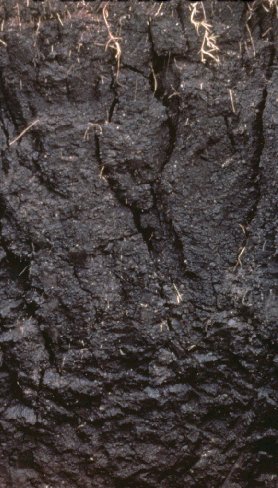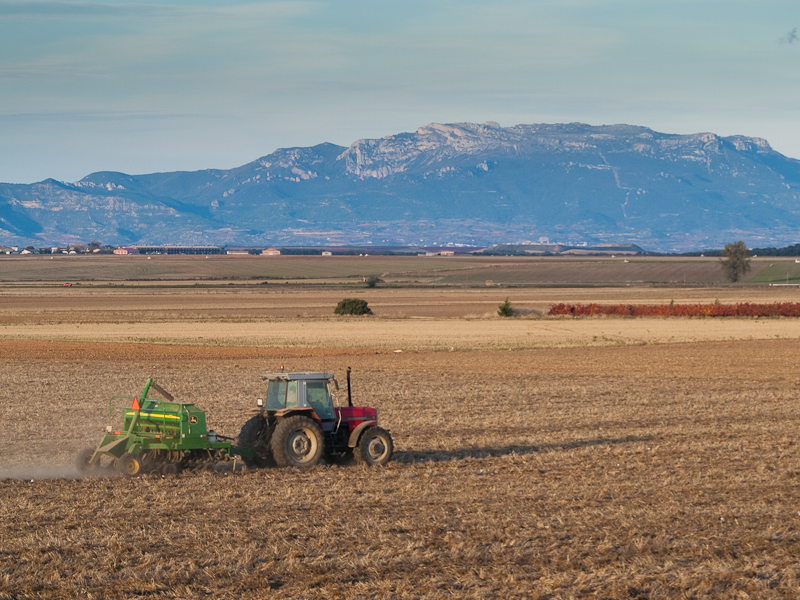|
Bujeo
Bujeo is a type of soil found on the countryside of Andalusia, mainly the area of the Guadalquivir The Guadalquivir (, also , , ) is the fifth-longest river in the Iberian Peninsula and the second-longest river with its entire length in Spain. The Guadalquivir is the only major navigable river in Spain. Currently it is navigable from the Gulf ... valley. The color ranges from yellowish brown to olive brown gray and dark gray to almost black, depending on their composition. One of its main features is its columnar structure strong and deep cracks in the dry state when dealing with materials rich in clays expansive. The texture is silty clay to clay. Their pH ranges from neutral to moderately alkaline and organic matter content is generally low. Because of the way these loamy clay soils "swell in winter and crack deeply in summer", they are called "tierras de bujeo", which literally means "land that moves". References {{reflist Agriculture in Spain Andalusia Soil ... [...More Info...] [...Related Items...] OR: [Wikipedia] [Google] [Baidu] |
Andalusia
Andalusia (, ; es, Andalucía ) is the southernmost Autonomous communities of Spain, autonomous community in Peninsular Spain. It is the most populous and the second-largest autonomous community in the country. It is officially recognised as a Nationalities and regions of Spain, "historical nationality". The territory is divided into eight Provinces of Spain, provinces: Province of Almería, Almería, Province of Cádiz, Cádiz, Province of Córdoba (Spain), Córdoba, Province of Granada, Granada, Province of Huelva, Huelva, Province of Jaén (Spain), Jaén, Province of Málaga, Málaga, and Province of Seville, Seville. Its capital city is Seville. The seat of the High Court of Justice of Andalusia is located in the city of Granada. Andalusia is located in the south of the Iberian Peninsula, in southwestern Europe, immediately south of the autonomous communities of Extremadura and Castilla-La Mancha; west of the autonomous community of Region of Murcia, Murcia and the Mediterr ... [...More Info...] [...Related Items...] OR: [Wikipedia] [Google] [Baidu] |
Vertisol
A vertisol, or vertosol, is a soil type in which there is a high content of expansive clay minerals, many of them known as montmorillonite, that form deep cracks in drier seasons or years. In a phenomenon known as argillipedoturbation, alternate shrinking and swelling causes ''self-ploughing'', where the soil material consistently mixes itself, causing some vertisols to have an extremely deep A horizon and no B horizon. (A soil with no B horizon is called an ''A/C soil''). This heaving of the underlying material to the surface often creates a microrelief known as ''gilgai''. Vertisols typically form from highly basic rocks, such as basalt, in climates that are seasonally humid or subject to erratic droughts and floods, or that impeded drainage. Depending on the parent material and the climate, they can range from grey or red to the more familiar deep black (known as "black earths" in Australia, "black gumbo" in East Texas, "black cotton" soils in East Africa, and "vlei soils" ... [...More Info...] [...Related Items...] OR: [Wikipedia] [Google] [Baidu] |
Soil
Soil, also commonly referred to as earth or dirt, is a mixture of organic matter, minerals, gases, liquids, and organisms that together support life. Some scientific definitions distinguish ''dirt'' from ''soil'' by restricting the former term specifically to displaced soil. Soil consists of a solid phase of minerals and organic matter (the soil matrix), as well as a porous phase that holds gases (the soil atmosphere) and water (the soil solution). Accordingly, soil is a three-state system of solids, liquids, and gases. Soil is a product of several factors: the influence of climate, relief (elevation, orientation, and slope of terrain), organisms, and the soil's parent materials (original minerals) interacting over time. It continually undergoes development by way of numerous physical, chemical and biological processes, which include weathering with associated erosion. Given its complexity and strong internal connectedness, soil ecologists regard soil as an ecosystem. Most ... [...More Info...] [...Related Items...] OR: [Wikipedia] [Google] [Baidu] |
Guadalquivir
The Guadalquivir (, also , , ) is the fifth-longest river in the Iberian Peninsula and the second-longest river with its entire length in Spain. The Guadalquivir is the only major navigable river in Spain. Currently it is navigable from the Gulf of Cádiz to Seville, but in Roman times it was navigable to Córdoba. Geography The river is long and drains an area of about . It rises at Cañada de las Fuentes (village of Quesada) in the Cazorla mountain range ( Jaén), flows through Córdoba and Seville and reaches the sea at the fishing village of Bonanza, in Sanlúcar de Barrameda, flowing into the Gulf of Cádiz, in the Atlantic Ocean. The marshy lowlands at the river's mouth are known as " Las Marismas". The river borders the Doñana National Park reserve. Name The modern name of Guadalquivir comes from the Arabic ''al-wādī l-kabīr'' (), meaning "the big river". There was a variety of names for the Guadalquivir in Classical and pre-Classical times. According to Titus ... [...More Info...] [...Related Items...] OR: [Wikipedia] [Google] [Baidu] |
Agriculture In Spain
Agriculture in Spain is important to the national economy. The Primary sector of the economy, primary sector activities accounting for agriculture, husbandry, fishing and silviculture represented a 2.7% of the Spanish GDP in 2017, with an additional 2.5% represented by the agrofood industry. Geography and climate of Spain Viewed in terms of land mass, Spain is one of the largest countries in Western Europe, and it ranks second in terms of its elevation, after Switzerland. Most of the territory experiences a dry summer climate (Mediterranean climate, mediterranean or semiarid) with scarce rainfall in the summer and high potential evaporation, as well as a total annual rainfall ranging from 400 to 600 mm. Longer droughts also occur. Although average minimum winter temperatures are often above 0 °C in a large part of the agricultural land, Frost (temperature), frosts are not uncommon in the interior of the country during the Winter. 20.6 million of Spain's 50.5 millio ... [...More Info...] [...Related Items...] OR: [Wikipedia] [Google] [Baidu] |


